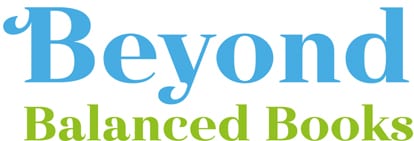You no doubt have heard about the Coronavirus Aid, Relief, and Economic Security (CARES) Act that allocated $349 billion to help small businesses keep workers employed amid the pandemic and economic downturn. One of the features of the CARES Act is the Economic Injury Disaster Loans (EIDL).
Update: This article does not contain the most up-to-date information on the EIDL program. to access more recent information on EIDL, please read our other article or visit the Small Business Association’s website.
What is it?
The Small Business Association’s (SBA) Economic Injury Disaster Loan program provides small businesses with working capital loans of up to $2 million. The purpose of these loans is to provide vital economic support to help overcome the temporary loss of revenue small businesses are experiencing.
Who can qualify?
In general, any small business with less than 500 employees that is not related to agriculture can apply. There are a few additional qualifications as well. For example, you cannot be engaged in illegal activity and any officer with 50% or greater ownership in the company cannot be more than 60 days delinquent on child support. The full list of eligible qualifications can be located on the first page of the application.
What information do I need?
Besides basic contact information, most businesses will need to provide the following:
- Gross Revenue 12 months prior to January 31, 2020
- Cost of Sales for 12 months prior to January 31, 2020
- Total number of employees as of January 31, 2020
- List of owners with personal information (SSN, Email, phone, citizenship)
Is this loan forgivable?
Unlike the Paycheck Protection Program (PPP) loan, the EIDL loan is not eligible for forgiveness. Small businesses that choose to apply for an EIDL should expect to make loan payments.
If you received an EIDL Loan Advance, those funds are forgivable. Additional information about the advance is discussed further in this article.
Payment terms for the EIDL are as follows:
- 3.75% interest for businesses (fixed)
- 2.75% interest for nonprofits (fixed)
- No pre-payment penalty or fees
- 30-year maturity date
- Payments are deferred for 1 year; however interest still accrues
How do I apply?
You can access the application for an EIDL with the SBA here.
EIDL Advance: There is a provision in the application to request to be considered for an Economic Injury Disaster Loan advance. The amount of the advance will be determined by the number of your pre-disaster (i.e., as of January 31, 2020) employees. If you are approved, the advance will be for up to $1,000 per employee with up to a maximum of $10,000.
Funds will be made available within three days of a successful application. If you meet the minimum requirements to apply for a disaster loan, the grant will be available to you whether or not your loan application is approved. Find out more here.
In order to be considered for the advance, you need to be sure and check the related box on Step 3 of the application. It’s easy to miss if you are not looking for it.
Update 9/9/2020: According to SBA’s website, advance funds have been fully allocated and are not currently available. However, small businesses can still apply for the traditional EIDL loan.
Many small businesses have applied for both the EIDL Advance and the Payroll Protection Plan (PPP) loan. For businesses that received the EIDL Advance only, the advance will not need to be repaid. However, if your business also received a PPP loan and intends to apply for forgiveness, the SBA will deduct the EIDL Advance from your maximum forgiveness amount, if applicable. It’s possible that any EIDL amounts received after January 31, 2020 were refinanced into your PPP loan, so be sure to check with your lender for more information.
There has been a lot of changing information surrounding these government financial aid programs. If you are looking for additional information on how to help your small business, we encourage you to check out our Resources page for additional help.
Updated 9/9/2020
Note: The information provided in this blog does not, and is not intended to, constitute legal or tax advice; instead, all information, content, and materials available on this site are for general informational purposes only. Information in this blog may not constitute the most up-to-date information. This blog contains links to other third-party websites. Such links are only for the convenience of the reader, user or browser.

